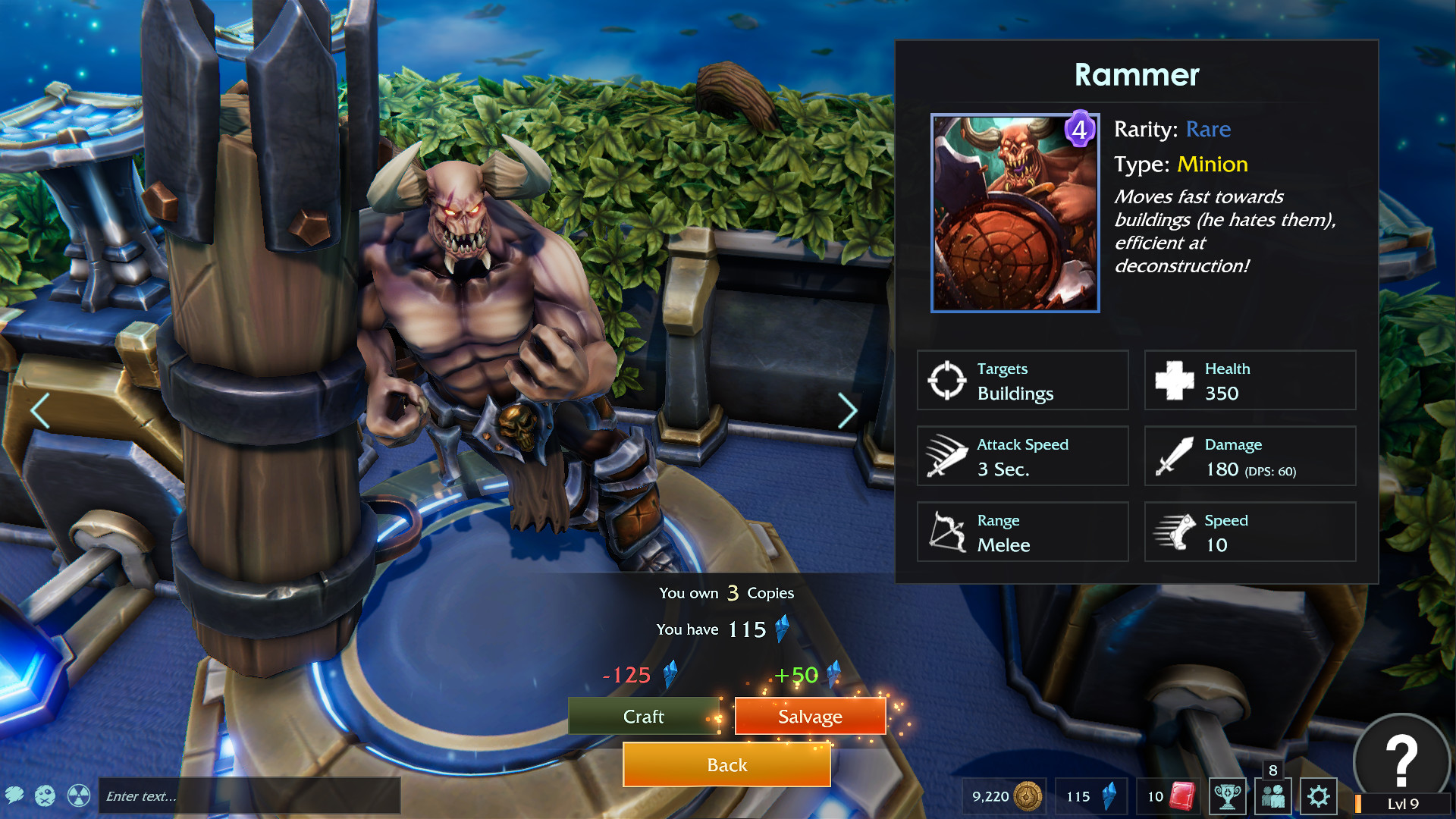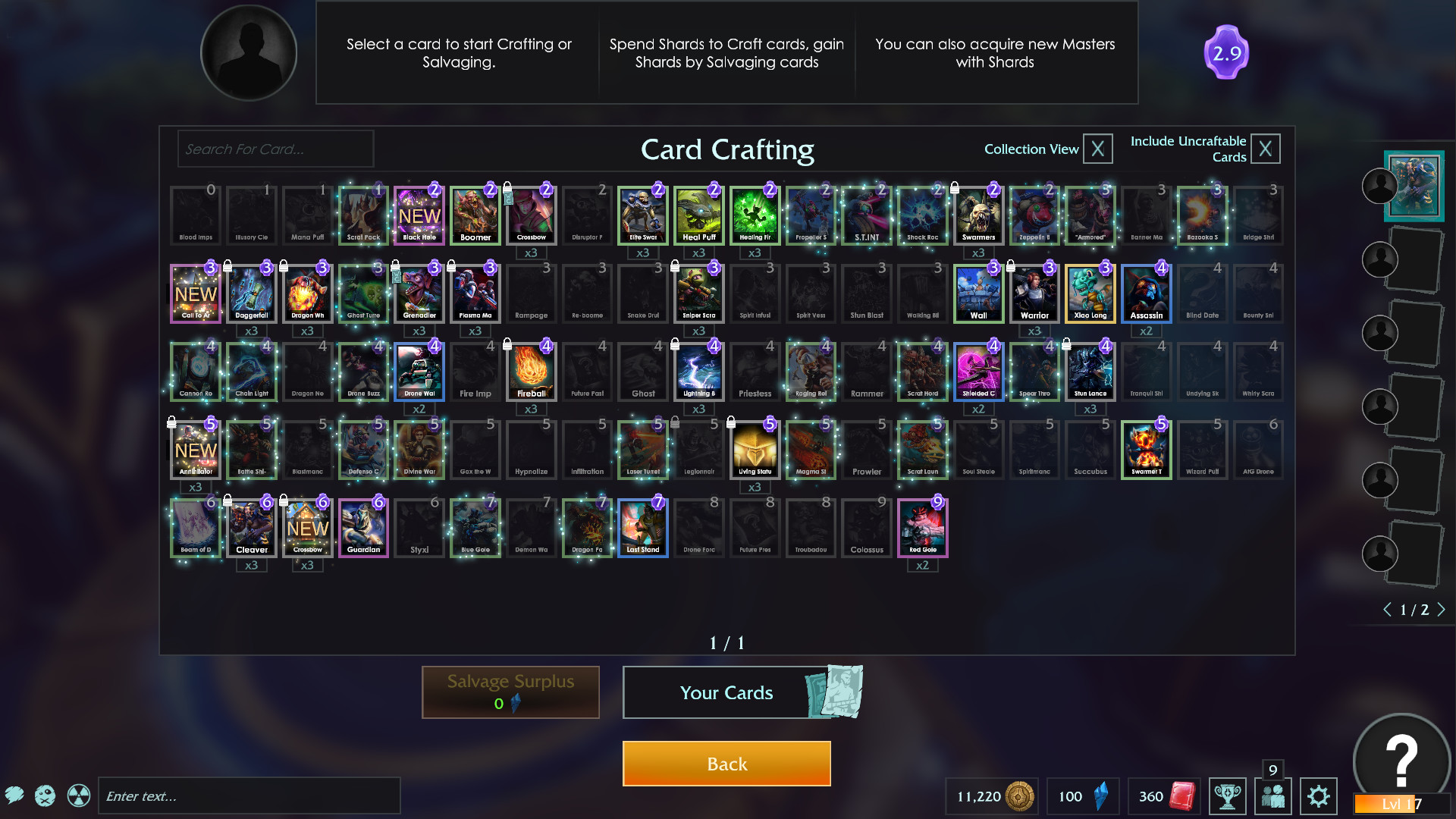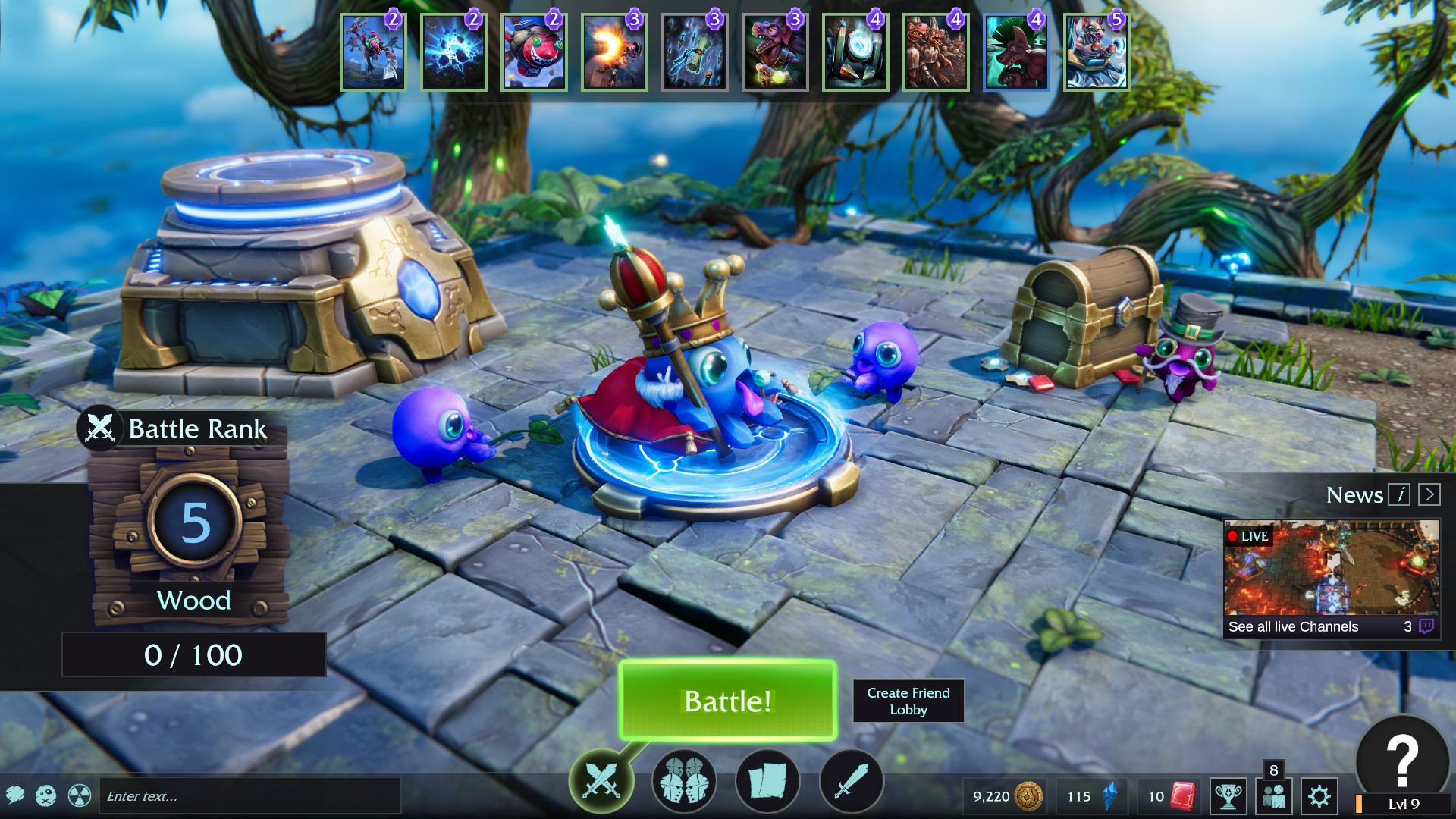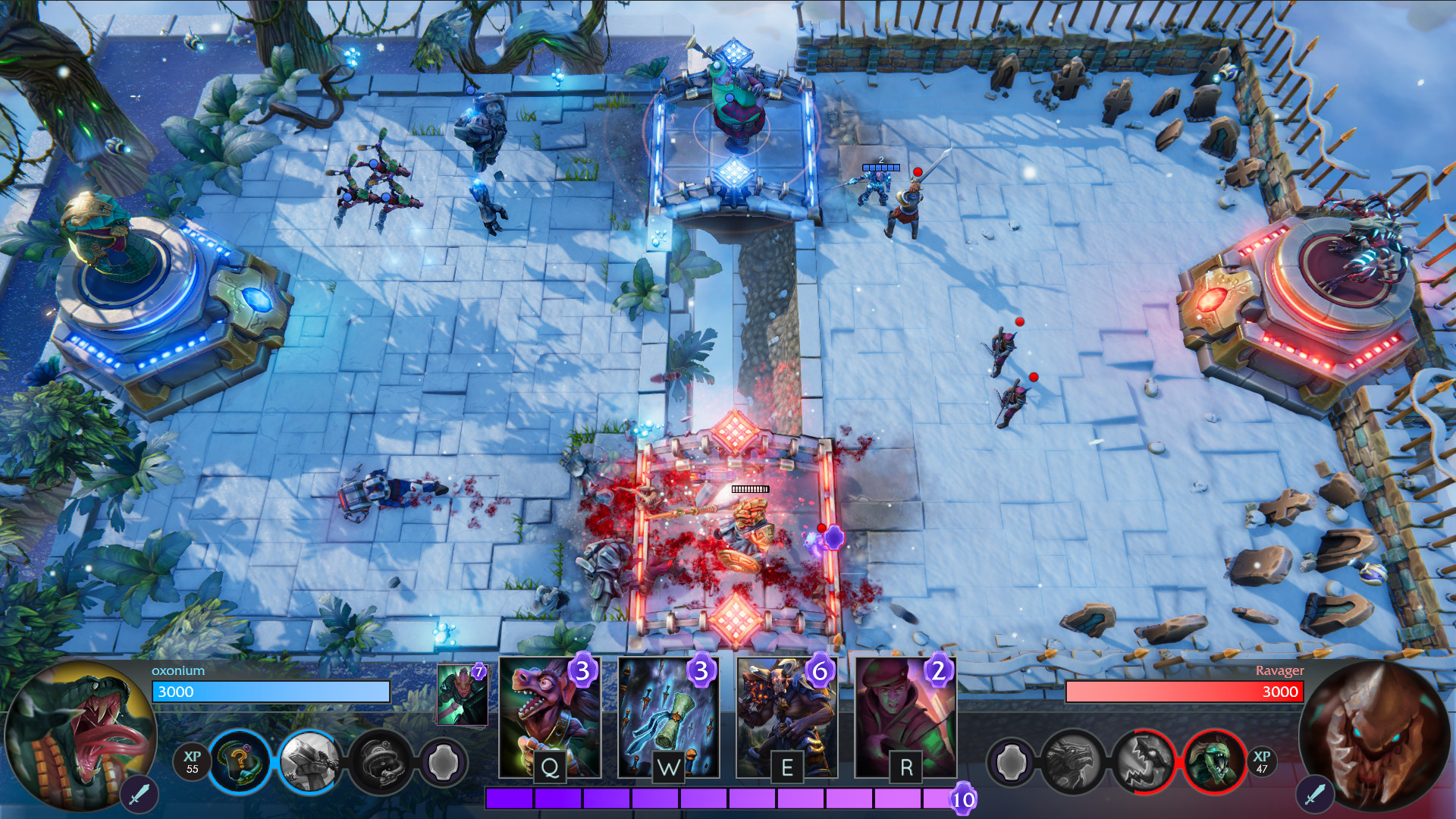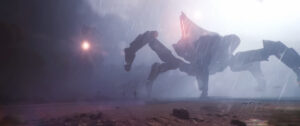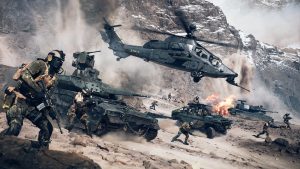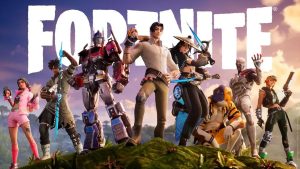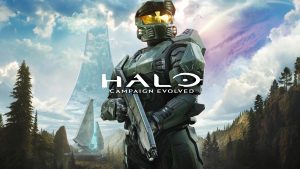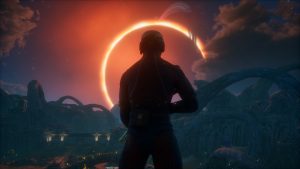
You’d think the market is tapped on MOBAs but Minion Masters: Forced to Duel begs to differ. Emphasizing 2v2 combat with collectible cards and minions, BetaDwarf’s hybrid looks to combine the best elements of CCGs with MOBAs. It’s an interesting formula but not without its challenges, especially when an Xbox One release is planned. What is the game and why should you look out for it?
GamingBolt spoke to BetaDwarf CEO Steffen Kabbelgaard about developing Minion Masters, what he believes stands out about the game, releasing for the Xbox One, the upcoming Xbox One X and much more.
"We’re very much avoiding pay-to-win, so all the solid choices are usually common or regular cards, with higher rarities offering special mechanics that require more knowledge to play."
What inspired the concept for Minion Masters and how do you feel it fits in with today’s MOBA-laden world?
The idea came from mods in Warcraft 3 and StarCraft 2. There were these semi-Tower Defense like maps with a more competitive aspect, mods like Nexus Wars, Castle Fight and Card Shuffle had these mechanics of real time strategy without the micro. You placed your units and they took care of themselves, so you just had to be smart about the placement.
They’re very far from MOBA’s, and we definitely don’t consider ourselves in that genre either, but we do have some MOBA-inspired mechanics like hero abilities and XP. The big difference is that they fit into what’s essentially a real time card game, rather than a real time action game, and of course the fact that they are 5-minute matches, as opposed to 40 minutes. Thus, we think it fits quite well, since we’re not actually competing for the same player-base, but can still draw on a few of the strengths.
How would you best explain the gameplay and what are some of the more effective strategies for new players?
In short it’s a real time collectible card game where you duel opponents 1 vs 1 or 2 vs 2. You collect cards and build a very simple deck of 10 cards consisting of Minions, Spells and Buildings. Combined with your Master there’s plenty of strategies and combos. You gain mana over time, and can use that mana to play your cards. Minions handle themselves, so once you place them you don’t need to make any more decisions, you can focus on what you place next. Get your Minions to the enemy Master and deal enough damage to win, it’s that simple.
But don’t forget about the bridges, your Minions can claim them for you by simply moving onto them, which will make them generate XP to level up your Master and gain new abilities. Like any CCG, newer players have a lot of success with swarm decks because they’re relatively simple to play. Supporting a big unit by healing it and buffing it is also pretty popular, as it creates a clear goal for you.
As players gain more experience they can try out the higher rarity cards, which are harder to use effectively. We’re very much avoiding pay-to-win, so all the solid choices are usually common or regular cards, with higher rarities offering special mechanics that require more knowledge to play.
What are some of the different minions and Masters that players can use to gain an advantage?
We’ve got Minions in all ranges, from a simple Warrior that has plenty of health and average damage to a cute little Puff creature that doesn’t fight, but stands on the bridges between arenas to generate Mana. The Troubadour is a fun Legendary minion who taunts all nearby enemies into attacking him, allowing you to control the flow of battle. The impressive Demon Warrior is a powerful minion that starts out very weak but grows in power every time you play her.
Some of the Masters are known characters from the FORCED universe like Ratbo the Exterminator, a heavily muscled Scrat wielding a minigun and snazzy one-liner and Volco, wielder of the fabled Volcanic Hammer, who uses his barely contained rage to empower Minions.
We also have new characters like Milloween, a young mage with great powers and an even greater humor or Settsu, a bad-ass space marine who can jump onto the field herself to attack the enemy Master.
"We made some design decisions early that enabled us to handle network much more easily than our previous game FORCED."
How do the masters differ from one another with regards to their abilities? How does this inform the different strategies that players use?
I’ll give you a few examples.
- Ratbo – He is one of the simpler Masters. He summons a Scrat every time he plays a Minion, which allows him to swarm the enemy. He also has the ability to spray his minigun at one enemy unit, dealing damage based on how many Minions he has on the field. You’ll want to include plenty of small minions in his deck.
- Volco – An AoE focused Master, he deals area damage with spells and attacks, but he can’t attack air. This means you have to be very careful about what units you include in your deck, and for the opponent, it means he has a special avenue of attack during the match.
- Mordar – A lich whose Tombstones take time to activate, and then resurrect the next Minion that dies. They require a lot of timing to resurrect the right Minion, and the opponent can even counter them with stuns if he’s good. Since you want to resurrect big minions, you should include those in your deck but you can’t neglect small minions to grab the bridges, otherwise you fall behind on XP.
- Settsu – All of Settsu’s abilities focus on upgrading her Mech suit so she can enter the field and fight directly.
She’s great support for bigger minions or a rush, but her second ability also allows her to instantly reload her powerful gun when you play a spell, so you want to include those for some clever timings. At level 3 the first bullet even stuns, so she can combo enemies into submission!
What are the benefits of Early Access on development and how has feedback helped improve the gameplay experience?
Early Access has been a great period for us. It’s been giving us a lot of really dedicated players interested in helping develop the game. First of all, it’s got a great ambiance of collective development. Players finding bugs provide detailed reports and are ecstatic to be thanked in the patch notes. This understanding of a product in development is crucial to making the effort collaborative, rather than antagonistic when it comes to issues. It has allowed us to release half-complete features to test out the basics and see which direction we should move in, and even in the case of Guilds to get feedback before starting development on the feature.
We’re also using a very open approach where we discuss balance and possible solutions directly with active members of the community. Sage advice from these people who play the game more than us is crucial to reaching a good balance for a competitive game like ours.
How do you usually handle matchmaking, especially when it comes to pitting players against some one of their skill level while maintaining a good connection?
Luckily our game is relatively simple on a technical level. We made some design decisions early that enabled us to handle network much more easily than our previous game FORCED. This means connection issues are much more rare, so we can focus more on matching people based on skill than on location. This will also allow us to do cross-platform play without issue as we move forward.
How is the 2v2 mode currently working out and what differences in strategies have you observed with the variety of masters in play?
2v2 is great! We actually did a very early version of it as an event to try it out, but the players asked us to keep it around despite the missing things. We’re loving how playing with a friend changes your playstyle. There’s some obvious changes, such as being able to build your decks to synergize, essentially making a 20-card deck instead of the 10 cards we usually have.
Beyond that, Team Battles are generally longer than normal matches because it’s harder to use early strategies. This goes especially when matching alone for Team Battles, since you can’t really count on what your ally is using to bring an early rush to the opponent.
"Right now we’re hard at work on our exciting upcoming feature – Frontier Expeditions."
What can you tell us about the new Guild System and how it works? When can we expect to see it added?
We brought our initial design for Guilds before the community for feedback, and quickly realized that many of the mechanics would require a bigger player base than we currently have. Thus, we’ve put it on hold for now, but expect it to become more relevant as we grow the player base toward the release.
The short explanation of it is that you form Guilds with a limited number of players. There will be leaderboards for the Guilds, so gathering the best players and fighting for higher ranks can show off how good you are. Besides that, you work together to unlock special Guild Chests that provide additional rewards.
What’s next in terms of updates? When can we expect the game to exit Early Access?
Right now we’re hard at work on our exciting upcoming feature – Frontier Expeditions. It’s a whole new concept for CCGs where you gain supplies for playing online matches which you then use to move around in a map where you gather gold, cards, relics and even fight special PvE challenges. We’re hoping to release the game in Q1 of 2018.
Is there is a reason why you are not launching on the PS4 given its larger install base?
Quite simply we received a unique opportunity to work with Microsoft as they would really like to bring more games like ours to the platform. It’s a little explored genre and should provide players with a whole new genre of fun.
The game will be receiving Xbox One X support. Is native 4K and 60 frames per second on the cards?
Given the strength of the GPU we definitely have those options, but as always with indie development things change quickly, so I can’t make any promises on what benchmarks we can reach.
What is the resolution and frame rate of the base Xbox One version?
We expect it to run in 1920×1080 at 60 fps.
In terms of pure hardware perspective, the picture is clear. The Xbox One X is far ahead of PS4 Pro in terms of GPU and memory bandwidth. The differences in ROP counts and bandwidth are public knowledge. As a developer, who is the face of pushing visual boundaries, what is your take on the differences between the two and do you think this difference will be visible to the general audience?
The strength of the Xbox One X is surprisingly big, which logically would mean that the games on the Xbox One would look at lot better than the PS4. Chances are that developers that want to go to the limit will edge more towards the Xbox One X because of the relative ease of porting to PC and the other way around with the UWP. The main thing that would keep cutting edge developers away from the Xbox One X would be backwards compatibility, with the original Xbox One being a lot weaker. Then again, the same goes for PS4.
"Personally I expect many games to not use the full potential of the XboxOne X, just like most games run sub-optimally on the majority of PCs."
Generally, for smaller games the difference will not really matter, but for the big AAA games I do expect a higher, more stable framerate on the Xbox One, and most likely more games that will be able to run true 4k.
What are your thoughts on the Xbox One X’s 6TFLOPs GPU? What kind of advantage this has given you while developing this game?
As one of the programmers told me, the 6 TFLOPs “are of course nice, but the exact performance has yet to be seen as with every GPU before its release”. For our sakes, it’s allowing us to use physically based rendering comfortably, something we’ve been using before our engine supported it, so that’s perfect.
The Xbox One X features plenty of RAM too. 9 out 12GB is available to developers…which is undoubtedly more than the average found in gaming PCs. How has this helped you?
Again we have to think of the baggage of the backwards compatibility, so the full potential won’t be realized. However, as we’re already developing for PC with a wide hardware target, the Xbox One X will enable users to experience Minion Masters in what we call “Glorious” quality – the one that really pushes the limits.
Do you see games using the full potential of the Xbox One X, especially given that developers also need to support the older Xbox One?
Personally I expect many games to not use the full potential of the XboxOne X, just like most games run sub-optimally on the majority of PCs. With the consoles getting several versions the cost/gain from optimizing for the consoles becomes less efficient, meaning that optimizing for the weakest one and just letting the power of the stronger one make up for it will seem like a logical conclusion for a lot of teams. Especially the smaller teams that can’t afford to spend the time required to optimize for many different systems – and I think we fall in that category
I just wanted to take you back to the earlier Xbox One days. The console’s eSRAM was painful to work with. Many developers had issues with it. Is it still that much of a problem in your game?
Haha, those sound like days we’re happy to have missed, because it’s definitely not something we’re running into now, or even did when we ported our first game.
Is anything else you want to tell us about the game?
I’ve already rambled so much, but I guess I can mention that we’ve been very focused on rapid updates for the game. Since Early Access launched we’ve done a total of 44 updates, basically one per week, and we still have plenty of things we want to add to the game.








